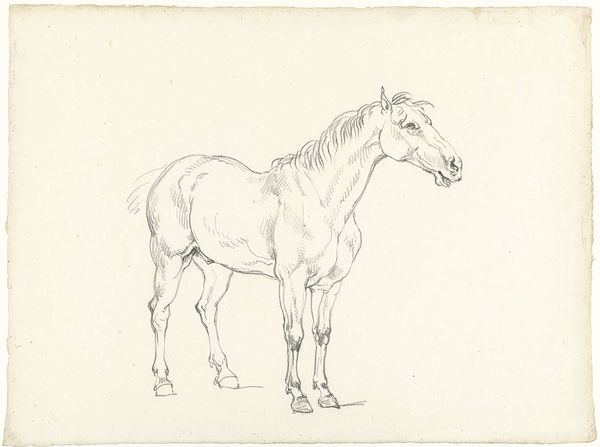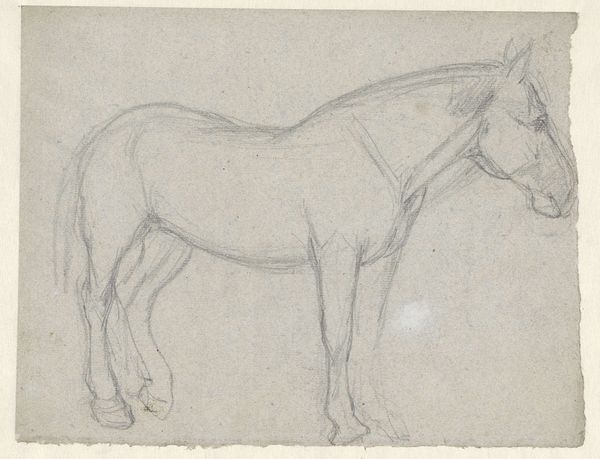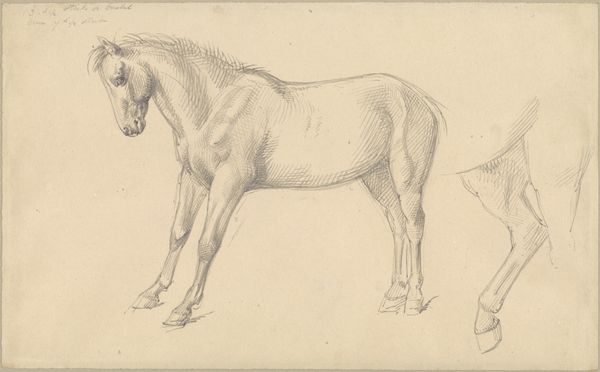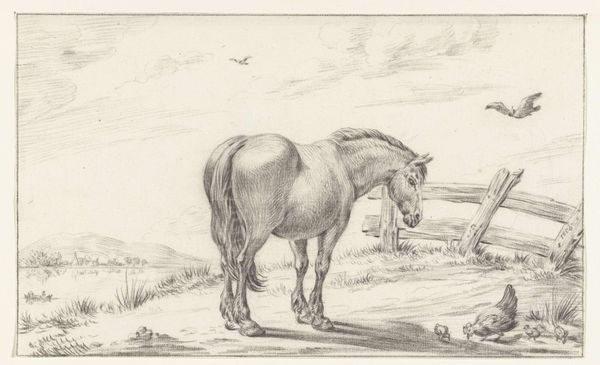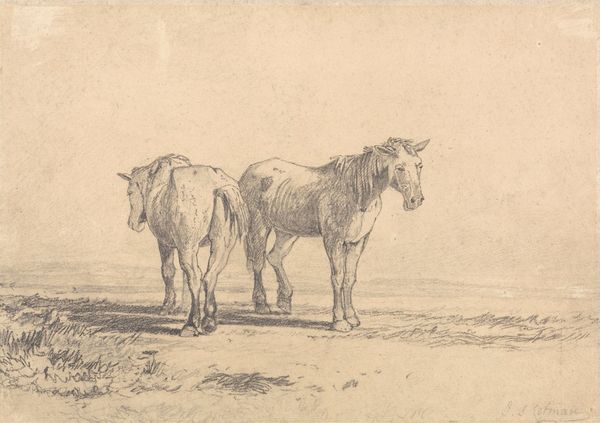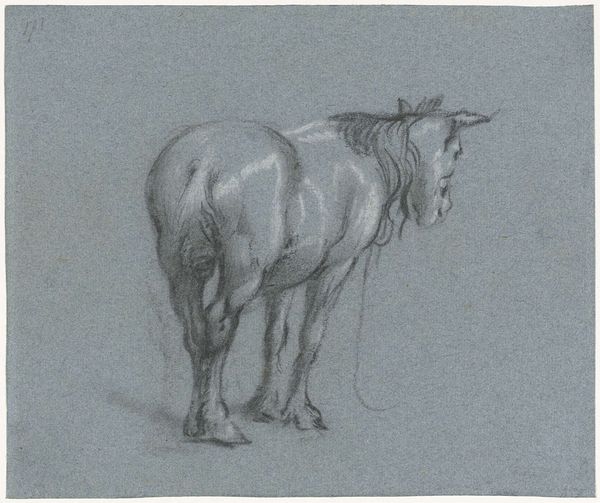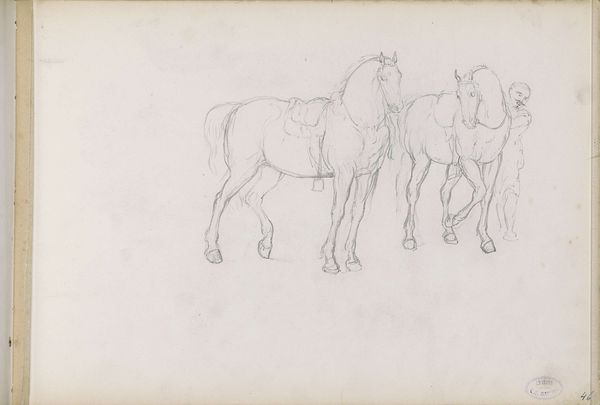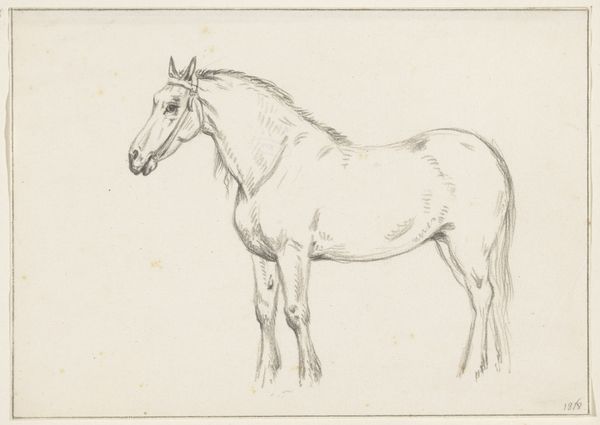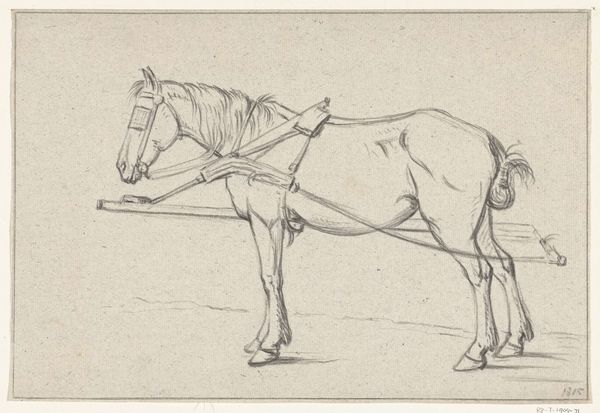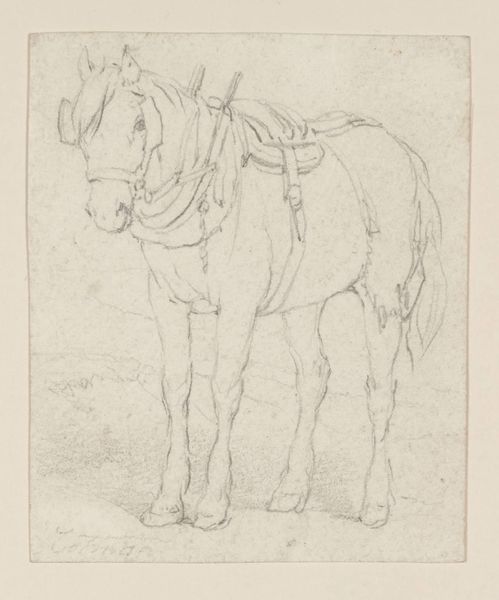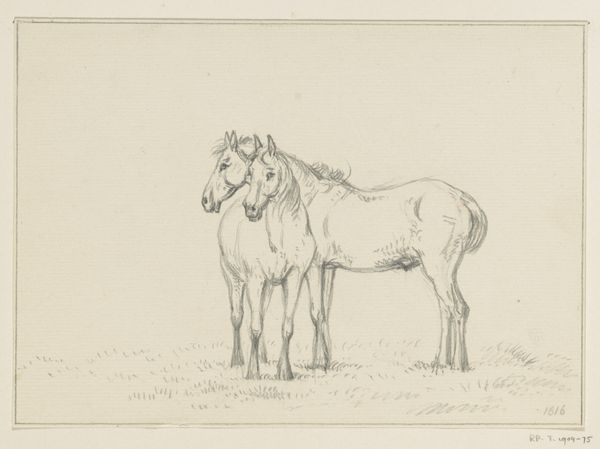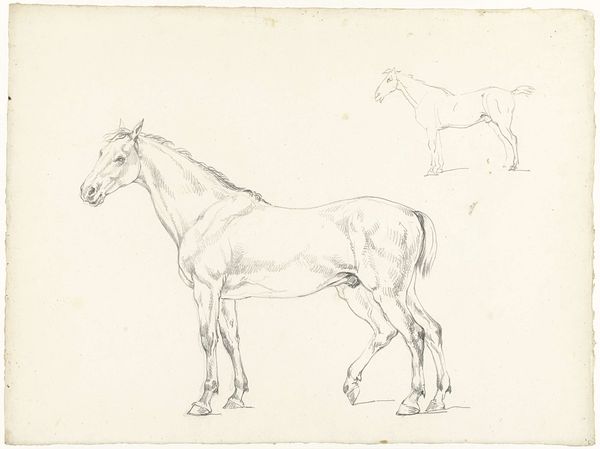
drawing, pencil
#
drawing
#
light pencil work
#
pen sketch
#
pencil sketch
#
landscape
#
personal sketchbook
#
ink drawing experimentation
#
pen-ink sketch
#
pencil
#
horse
#
sketchbook drawing
#
pencil work
#
sketchbook art
#
realism
#
initial sketch
Dimensions: height 137 mm, width 176 mm
Copyright: Rijks Museum: Open Domain
Curator: So, we are looking at a pencil drawing titled "Standing Horse and a Lying Cow" by Jan (II) Kobell, dating from somewhere between 1788 and 1814. Editor: What strikes me is its simplicity. It’s quite sparse, almost ethereal, like a fleeting memory captured in graphite. The horse standing guard over the cow… there’s a gentle, pastoral feel about it. Curator: It's true, there’s an immediacy, but I think this represents the burgeoning industrialization of the Dutch countryside. This drawing exists at a pivotal time, when agriculture and its imagery were being idealized against a backdrop of rapid urbanization. Think of the public yearning for these serene scenes. Editor: Ah, a visual yearning! I get it. Still, the horse feels like a spirit animal, no? Tall, kind of…present in a protective way while the cow simply lays. Does this give the society a certain feeling of peace perhaps, knowing that livestock is secured? Curator: Precisely! These images were commodities; emblems of rural virtue carefully constructed and circulated to reinforce a particular vision of Dutch identity in a changing world. Editor: That's intriguing, to frame such a gentle sketch as having socio-political undertones. I mean, the softness of the pencil work... the casual composition makes it seems more like an artist’s personal study rather than something intended for the public. Curator: Consider the context in which it might have been displayed or reproduced. These sketches, while seemingly informal, contributed to a wider cultural narrative that favored an idealized version of the past. It is meant for public consumption. Editor: Hmmm, so its value lies not so much in its aesthetic form, but in the cultural work it does. Curator: Absolutely. And I think we see the evidence everywhere here from his time. The sketch serves a certain, bigger purpose. Editor: Interesting. I’ll never look at a peaceful pasture quite the same way again. Curator: Me neither. And next time perhaps we discuss a pig, since it appears nowhere in the cultural narratives of this kind, I wonder why.
Comments
No comments
Be the first to comment and join the conversation on the ultimate creative platform.
